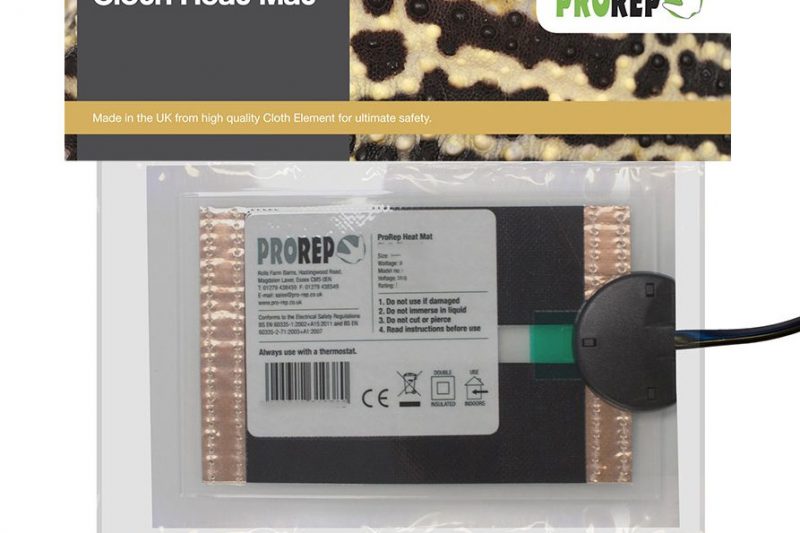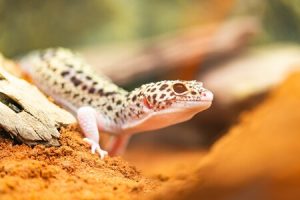
How much does it cost to run my vivarium?
How much does it cost to run my vivarium? We are all becoming more aware of energy costs as the price continues to rise. So

Reptiles are ectothermic – ‘cold blooded’ – which means that unlike mammals they obtain their body temperature from their environment. In nature, reptiles choose to dwell in various areas based on their temperature. If they require more warmth, they will move over to a sunny area and if they need to cool down, they will look for shade or burrow into the ground.
As such, heating is an essential part of a vivarium setup as cold-blooded reptiles need heat to remain healthy and thrive. Although there are many different ways to provide heat within an enclosure, a popular way to provide this warmth within enclosures is through heat mats. These provide a constant source of heat within a vivarium for reptiles to move to as needed, but for maximum accuracy must always be used with a simple on/off thermostat and a digital thermometer.
Heat mats produce ultra long wavelength infrared heat, with the rays heating objects they strike but retaining a lower air temperature.
Heat mats are a popular choice of heating as they are cheaper and more efficient to run than most other heating systems. Whilst it is certainly true that they provide a gentle heat source, and that their life span is far better than ceramic bulbs and heat bulbs, they can still be dangerous if used incorrectly. Although they have traditionally been used on the floor of the vivarium under the substrate, this can be dangerous and increases the risk of burning to the animal. These days we advocate the much safer method of mounting the heat mat vertically on the side of the vivarium. The mats still work, but it is a far safer method.
In the UK, wooden vivariums are the most popular choice for reptiles, as they provide a secure environment for a wide range of reptile species at a cost-effective price. Wooden vivariums retain heat and are highly efficient at maintaining an appropriate temperature throughout the day.
When placing heat mats inside wooden vivariums, it is important to ensure the heat mat does not get damaged during installation, or at a later stage by your pet. Always mount your heat mat on the side of your vivarium by using one of the many available self adhesive heat mats.
To help ensure that your pet has the temperatures and humidity it needs to thrive, download our free reptile environment temperature checklist which can be printed and completed on a weekly basis.
The ProRep Heat Mat and Strip range is available in a range of various sizes to suit most heating requirements, and are manufactured in the UK to the highest safety standards. Plenty of care should be taken to comply with the safety instructions with any reptile heating mat, and a thermostat should always be used to prevent the heating mat from overheating.
The size of heat mat and installation method most suitable will depend on the requirements of your reptile, as well as the design and size of the vivarium or set up which you are looking to heat. You may need to supply supplementary heating for species which require more intense heat, or basking spots which will sufficiently raise their body temperature.
The ProRep Sticky Back Heat Mat offers all the features of the ProRep Cloth Element Heat Mat, along with a special self-adhesive which has been applied to the heat mat to allow for easy installation. With the adhesive back, they are great for wall mounting inside your vivarium.
Like the other heat mats for sale in ProRep’s range, the ProRep Sticky Back Heat Mat works by producing ultra long wavelength infrared heat which the animal and vivarium structure absorbs, much like the way the sun rays warm animals which are basking or the ground in nature. This action allows animals within a vivarium to warm themselves without necessarily raising the air temperature in the vivarium or tank.
The ProRep High Output Heat Mat is a high output alternative to the standard cloth element heat mat, and is designed for use with reptiles, amphibians and invertebrates. This model is created to be fixed to either the wall or ceiling of an enclosure through the use of a special adhesive which is applied to the heat mat, with the heat mat including the sticky back to allow for easy installation.
These heat mats are made with cloth heating elements and create ultra-long wavelength infra-red heat, with this model producing a much higher temperature than standard heat mat models. It is vital for these mats to be used with a thermostat, and to remain uncovered at all times to maintain a good airflow over the mat.
The Reptile Systems Heating Mat is an easy to install, ultra-flat and thin heat mat designed to be used for reptiles and amphibians. This is a self adhesive mat, and so can be used inside wooden vivariums or on the outside of glass ones without the need to use any sort of sticky tape.
Like the other heat mats for sale, the Reptile Systems Heating Mat works by producing ultra-long wavelength heat that is absorbed by the animal and cage furnishings in the same way as the sun would heat them. They allow the animal to warm itself without drastically raising the ambient temperature inside the enclosure, although we suggest always making use of a thermostat with these mats.
The ProRep Cloth Element Heat Mat offers exceptional quality and is designed for use with reptiles, amphibians and invertebrates. As this model of heat mat does not include a self-adhesive back it should only be fixed to the outside of glass vivariums with strong tape. Sticky tape should never be used inside a vivarium.
These heat mats are made with cloth heating elements and work by producing ultra long wavelength infrared heat which the animal and vivarium structure absorbs, much like the way the sun rays warm animals which are basking or the ground in nature. These conditions allow animals within a vivarium to warm themselves without necessarily raising the air temperature in the vivarium or tank.
It is important to make sure you know what temperature your pet needs, and to check what temperature they are receiving. Always use a digital thermometer, and make sure that you are familiar with the temperatures in your vivarium at the warm end, cool end, and basking spot day and night. Use thermostats where appropriate, and be aware of your pet and their environment in all weather conditions.
For an in-depth guide to managing an appropriate vivarium temperature for your reptile, read our article on Overheating – How to deal with your vivarium in a heatwave.
Reptiles which overheat are known to express fairly alarming symptoms. Lizards can be seen to gape, try to hide in the coolest area, and may even become aggressive or have fits in extreme cases. Snakes tend to ‘stargaze’, a sign which is usually associated with serious disease where the snake will lift and tip its head backwards, as though looking up at the sky. They may also corkscrew aimlessly or have fits. These are emergency cases and you should take the reptile to your local vet as fast as possible. A reptile specialist would be ideal, but any vet should be able to help you in emergency cases like these.
For more information, please check out our Care Hub with an extensive range of Care Sheets, or Contact Us if you wish to find out more about our range of Heat Mats or Wooden Vivariums available from our Oxfordshire reptile shop.

How much does it cost to run my vivarium? We are all becoming more aware of energy costs as the price continues to rise. So

Setting up a new enclosure, especially for the first time, can be very confusing. There are a lot of questions that we are commonly asked

Once we have decided on what species of reptile we want to keep, we have to assemble the equipment needed for it to live a
Copyright 2021 Evolution Reptiles
All rights reserved.